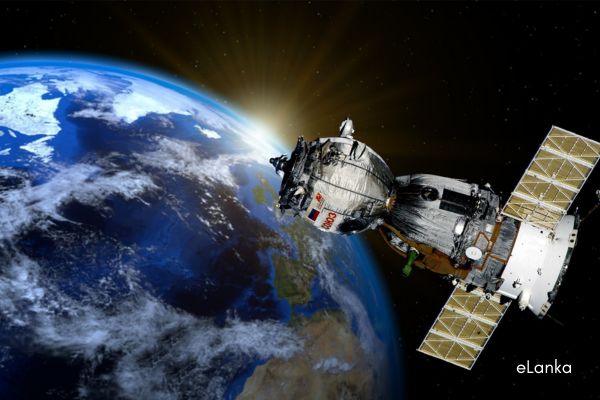How Satellites Are Transforming Global Communication – By Bhanuka – eLanka

Satellites have revolutionized the way we communicate, connecting the world like never before. From enabling instant global messaging to providing internet access in remote areas, satellites play a crucial role in modern communication systems. Over the years, advancements in satellite technology have transformed industries, improved emergency response systems, and bridged the digital divide. In this article, we explore how satellites are reshaping global communication and what the future holds for satellite-based connectivity.
The Role of Satellites in Communication
Satellites act as relay stations in space, transmitting signals between different points on Earth. Unlike traditional fiber-optic cables, which require extensive infrastructure, satellites can provide connectivity even in the most remote locations. This makes them essential for:
- Telecommunication Services – Satellite networks facilitate phone calls, video conferencing, and broadcasting.
- Internet Connectivity – Satellites provide internet access in rural and underserved areas.
- Emergency Communications – They help during disasters by ensuring critical communication lines remain open.
- Military & Defense Operations – Satellites support secure and encrypted communication for military purposes.
Types of Communication Satellites
-
Geostationary Satellites (GEO)
- Orbit at an altitude of 35,786 km above Earth.
- Remain fixed in one position relative to the planet.
- Used for television broadcasts, weather monitoring, and long-range communication.
-
Medium Earth Orbit Satellites (MEO)
- Positioned at altitudes between 2,000 km and 35,786 km.
- Commonly used for GPS and navigation systems.
-
Low Earth Orbit Satellites (LEO)
- Operate between 500 km and 2,000 km above Earth.
- Provide high-speed internet, real-time data transmission, and low-latency communication.
- Examples: Starlink by SpaceX, OneWeb, and Amazon’s Project Kuiper.
How Satellites Improve Global Connectivity
1. Bridging the Digital Divide
Millions of people worldwide lack access to the Internet due to the lack of infrastructure. Satellite-based broadband services provide connectivity in remote regions where laying fiber-optic cables is not feasible. Companies like Starlink, OneWeb, and Viasat are deploying LEO satellite constellations to offer affordable and reliable Internet services globally.
2. Supporting Disaster Response and Emergency Communication
During natural disasters such as hurricanes, earthquakes, or floods, ground-based communication networks often fail. Satellites provide real-time emergency communication, allowing rescue teams to coordinate relief efforts and provide aid. Organizations like NASA, FEMA, and the Red Cross rely on satellite networks for disaster response.
3. Enhancing Mobile and 5G Connectivity
The rise of 5G networks is heavily dependent on satellite technology. Satellites act as backhaul support for cellular networks, ensuring seamless connectivity in urban and rural areas. Companies like HughesNet and SES integrate satellite technology into mobile networks to expand coverage.
4. Revolutionizing Television and Broadcasting
Satellites play a crucial role in television broadcasting, enabling live coverage of global events, sports, and news. They allow content providers to distribute high-quality video signals across continents without requiring extensive ground infrastructure.
5. Enabling Secure Military and Government Communications
Governments and defense organizations use satellites for encrypted communication, intelligence gathering, and surveillance. Systems like the MILSTAR and MUOS networks provide military forces with secure and uninterrupted communication in any environment.
Future of Satellite Communication
The future of satellite communication looks promising, with innovations that will further enhance global connectivity.
1. AI and Smart Satellites
AI-powered satellites can optimize bandwidth allocation, detect network congestion, and enhance performance, ensuring faster and more efficient communication.
2. Quantum Communication
Quantum satellite communication is expected to revolutionize cybersecurity by enabling ultra-secure, unhackable communication channels. China’s Micius Satellite has already demonstrated the potential of quantum encryption.
3. Space-Based Internet for Smart Cities
With the expansion of smart cities, satellite-based IoT networks will support smart infrastructure, autonomous vehicles, and real-time traffic management.
4. Inter-Satellite Communication Networks
Future satellite constellations will use laser-based inter-satellite links (ISL) to create a high-speed space-based internet network, reducing reliance on ground stations.
Conclusion
Satellites have fundamentally transformed global communication, thereby making the world more connected than ever before. Moreover, from enabling internet access in rural areas to supporting military operations and disaster relief, satellites play a vital role in modern life.With rapid advancements in technology, the future of satellite communication holds exciting possibilities, paving the way for a truly interconnected world.























